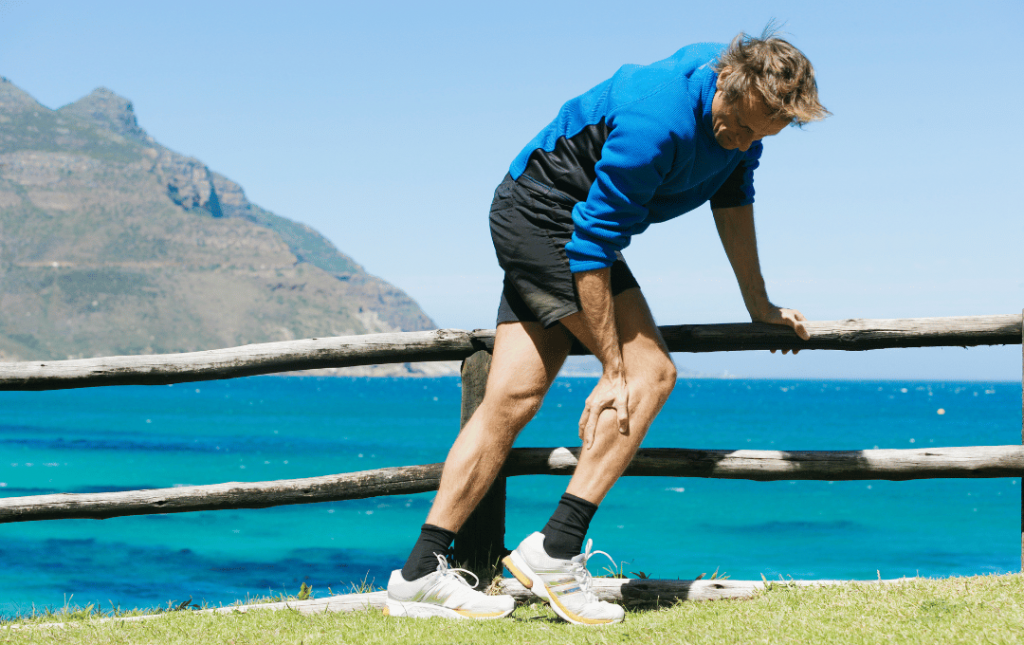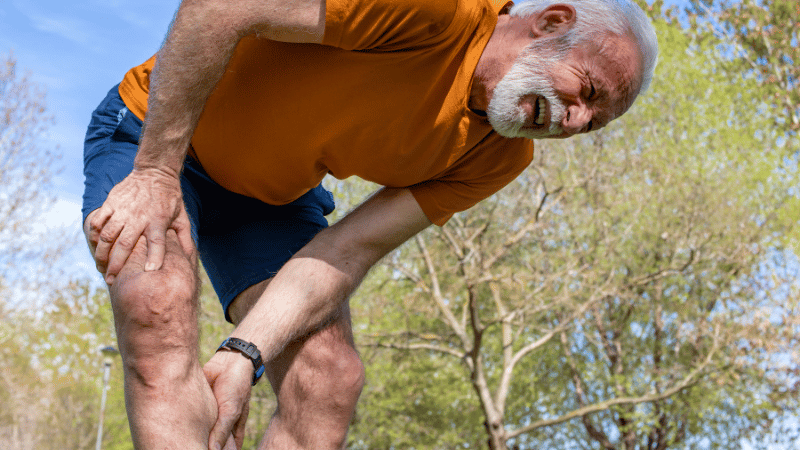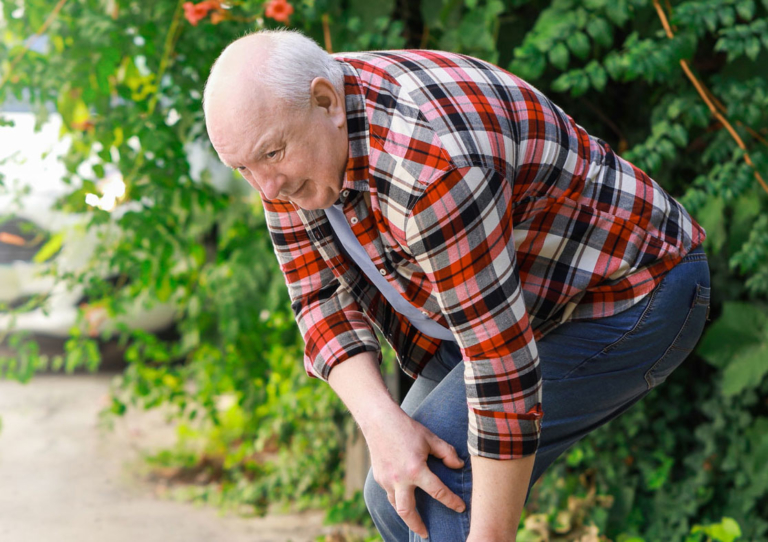Dull aches or stiffness in the calves can be caused by muscle strains and overexertion. If you recently switched to a new workout or overstretched your muscles after exercising, this type of calf muscle pain would be considered normal and should subside after resting.
However, chronic calf pain paired with swelling, tightness, or an unusual tingling sensation could be a warning sign of a vascular condition like peripheral artery disease (PAD).
Understanding the potential causes of calf pain and its connection to underlying health conditions can help you determine how to manage calf pain discomfort and when treatment may be necessary.
What Causes Calf Pain?
Calf pain can manifest in various forms and can be caused by a range of mild to serious underlying conditions. Here are some common calf pain causes to look out for:
Muscle-Related Causes
Muscle-related calf pain caused by exercise or overusing your muscles can result in discomfort and cramping.
Common muscle-related causes of calf pain include:
- Muscle Strain: Overusing your muscles during exercise can lead to muscle strains. The pain associated with muscle strains can be improved using the RICE method.
- Dehydration: A lack of water can cause dehydration, leading to cramps in the calves. Simply increasing your water intake should help reduce the discomfort.
- Tendonitis: Inflammation in the tendons can lead to swelling in the calves. To prevent pain during exercise, prioritize stretching before working out and rest using cold compresses.
Nerve-Related Causes
Nerve issues or nerve damage can also cause sharp, burning pain in the calves.
Common nerve-related causes of calf pain include:
- Sciatica: Damage to the sciatica nerve can cause pain in the lower extremities. Hot or cold compresses can help relieve discomfort.
- Peripheral Neuropathy: Damage to the nerves outside the brain and spinal cord can lead to pain in the hands, legs, and feet. Consult your medical provider for treatment options.
Vascular Causes
If your pain is chronic and persistent, it may be a sign of a more serious medical condition, such as peripheral artery disease.
Health conditions linked to calf pain include:
- Deep Vein Thrombosis (DVT): DVT causes blood clots to form in the deep veins in the legs, leading to swelling, tenderness, and cramping in the calves.
- Compartment Syndrome: This condition occurs when pressure in the leg muscles causes pain and tingling in the calves.
- Peripheral Artery Disease (PAD): PAD is a vascular condition caused by plaque buildup in the arteries, which restricts blood flow, oxygen, and nutrients to the lower extremities.
If pain is persistent, consulting with a doctor is recommended for an accurate diagnosis.
Check Out Our Vascular Specialists
How Peripheral Artery Disease (PAD) Causes Calf Pain
PAD impacts blood flow in the lower extremities, which can lead to chronic pain and discomfort in the calves.
If left untreated, PAD can lead to claudication, which can cause pain in the lower extremities while exercising. This chronic pain does not improve when you sit down or rest. Advanced cases of peripheral artery disease can also lead to non-healing wounds and slow-healing ulcers.
Symptoms of PAD-Related Calf Pain
While most pain in the calf muscle doesn’t require medical attention, you’ll want to consider a vascular screening if you’re experiencing one or more of the following common PAD symptoms:
- Pain that worsens when exercising or walking
- Sharp, sudden pain in the calf
- Swelling and redness
- Numbness
- Skin discoloration
These are warning signals that your calf muscle pain may be caused by PAD or a more serious medical condition and will require a proper evaluation. If you’re exhibiting any of these symptoms, take our PAD risk assessment.
Treating PAD-Related Calf Pain
If PAD causes your calf muscle pain, there are minimally invasive treatment options that can help relieve chronic calf pain and improve mobility.
Treatments available at our clinics include:
- Angioplasty: A small balloon opens the affected arteries and compresses the plaque against the artery walls.
- Angioplasty with stent placement: A stent may be placed inside the artery to keep it propped open after a balloon angioplasty. Some stents also have slow-releasing medications that help prevent future blockages.
- Atherectomy: A blade and a catheter extract plaque from the artery walls. The procedure has a low risk of infection and only requires one small incision.
All three procedures offer a quick recovery and are less invasive than surgical alternatives. Our vascular specialists can help you find the best treatment plan for your stage of PAD.
Get The Care You Need From USA Vascular Centers
If you’re struggling with persistent calf muscle pain and suspect you may have PAD, schedule a consultation with USA Vascular Centers today. We have nationwide clinics and a professional team of vascular doctors who can provide an accurate diagnosis and treatment plan personalized to your needs.
Our clinics accept most insurance plans, including Medicaid and Medicare. Schedule an appointment online or call us at 888.773.2193 to learn more about our minimally invasive treatment options.
FAQs About Calf Pain & Vascular Health
Can exercise help reduce calf pain from PAD?
Yes, moderate exercise can improve circulation and blood flow, helping to reduce unwanted calf pain. However, if your pain worsens with exercise, you should avoid it and consult a vascular specialist to prevent symptoms from worsening.
Does PAD calf pain get worse over time?
PAD-related calf pain can worsen if left untreated. Leg pain, skin discoloration, and slow-healing ulcers can also occur if treatment is avoided.
What’s the difference between muscle pain and vascular pain?
Muscle pain typically occurs at rest and improves with movement, whereas vascular-related pain often worsens with activity and improves with rest.




